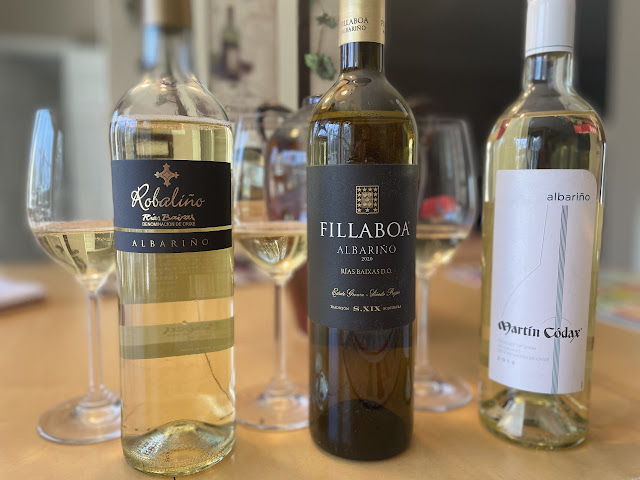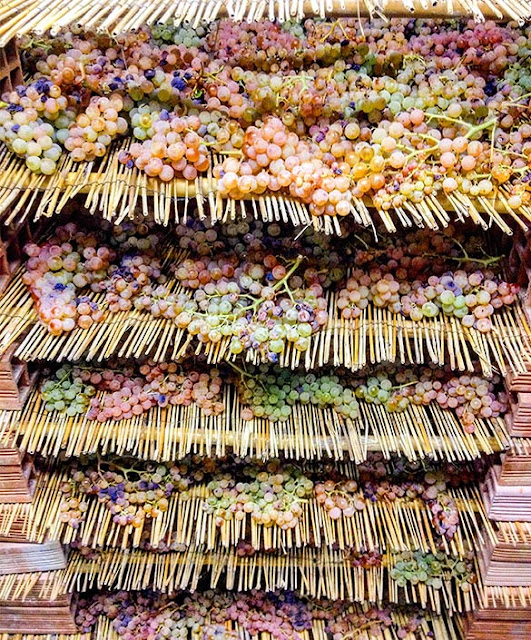Piedmont is one of my favorite wine regions in Italy. Such a large variety of traditional and native grapes from reds to whites and sparkling. This month our Italian Food, Wine and Travel group (#ItalianFWT) is exploring the Barbera grape hosted by Gwendolyn of Wine Predator. I recently bought a few bottles of Barbera so it was the perfect excuse to pick one to share with you today, which is from the Fontafredda winery.
The Winery ~ Fontanafredda
I love the history behind this winery. It actually was purchased in 1858 from the first King, King Vittorio Emanuele. He acquired the winery for his true love. Quite the present if you ask me. Although it was passed down to his children it wasn’t until 2008 that the property changed hands over to Oscar Farinetti whom it is operated by today.
Fontanafredda is located in Serralunga d’Alba of the Langhe area in Piedmont, which is a large territory in the southwestern part. The estate occupies 250 acres of vineyards with some planted back as far as 1940. In addition to vineyards they own about 30 acres of woods that help create the biodiversity with their focus on organic farming. As of 2018 Fontanafredda is the largest certified organic winery in Piedmont and is the largest estate in the Langhe spanning multiple municipalities. They produce about 6% of the production coming out of the Langhe. Organic farming and sustainability is a key focus for the winery and their values.
The winery is situated at about 250-420 meters above sea level facing a continental climate with varying temperatures and levels of rainfall. The soils are mostly calcareous with differences depending upon what vineyards you are situated in. On one end of the Serralunga d’Abla and Barolo you can have soils made up of about 50% sand and high up in the hills the soils are made of clay and loam.
Fontanafredda is for sure known for their Barolo receiving a number of accolades over the year including “European Cellar of the Year” by Wine Enthuasist and their Barolo La Rosa has been selected as one of the top 100 best wines in the world along with some of the highest ratings amongst Italian wines.
The Wine
Piedmont is a region dominated by reds and Barbera is the most widely planted grape there. It’s a grape known for its high acidity, deep color and low tannin. It’s a highly productive grape and is very versatile. You’ll see many variations of this grape depending upon the areas in which it grows and producers will use stainless or oak, which it takes a liking to considering its low tannin.
The 2017 Fontanafredda Briccotondo Barbera is made of 100% Barbera made under the Piemonte DOC. The fermentation takes place in stainless steel for 6-7 days and goes through malolactic fermentation in concrete tanks through December before its released in the spring. It’s aged partially in large Slavonian casks and new Allier oak. This wine is ruby red in color. On the nose this wine shows juicy berries, mostly blueberries and plums, with some pepper and spice. It’s an easy drinking, medium-bodied wine with soft tannin and fresh juicy fruit. Nice and balanced. SRP $15 ABV 13.5% A perfect wine to go with my Friday night pizza!
 |
- Linda Whipple is Getting Reacquainted with My Old Friend Barbera on My Full Wine Glass.
- Nicole Ruiz Hudson has 5 Nights of Barbera on Somm's Table.
- Terri Oliver Steffes shares Abbona Barbera del Monferrato, Warm and Elegant on Our Good Life.
- Cindy Rynning writes It’s Time to Drink More Barbera! on Grape Experiences.
- Andrea Lemieux asks Wherefore art thou, Barbera d’Asti? on The Quirky Cork.
- Wendy Klik pours Vietti Barbera d’Alba Tre Vinge 2018; Organic, Sustainable, Bio-dynamic on A Day in the Life on the Farm.
- Camilla Mann is Exploring a Few Bottles of Barbera Plus Wild Boar Tamales + 2018 Cascina San Lorenzo Barbera on Culinary Adventures with Camilla.
- Susannah Gold shares "Barbera – A Look at Asti, Alba and Nizza on Avvinare.
- Our host, Gwendolyn at Wine Predator, is featuring 2017 Aldo Clerico Barbera D’ Alba with Anchovies, Pizza, Sausage Orecchiette.






